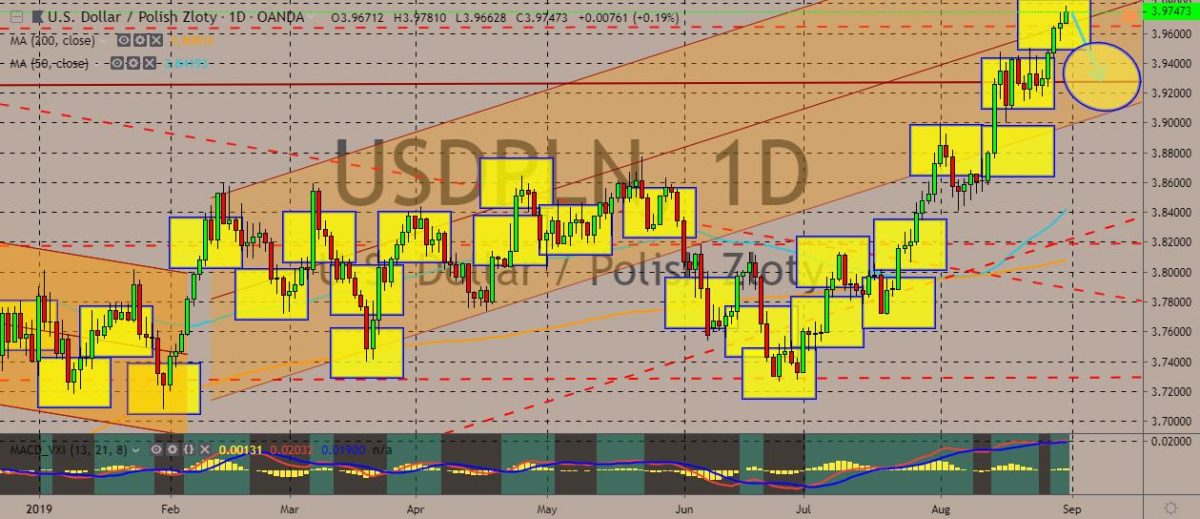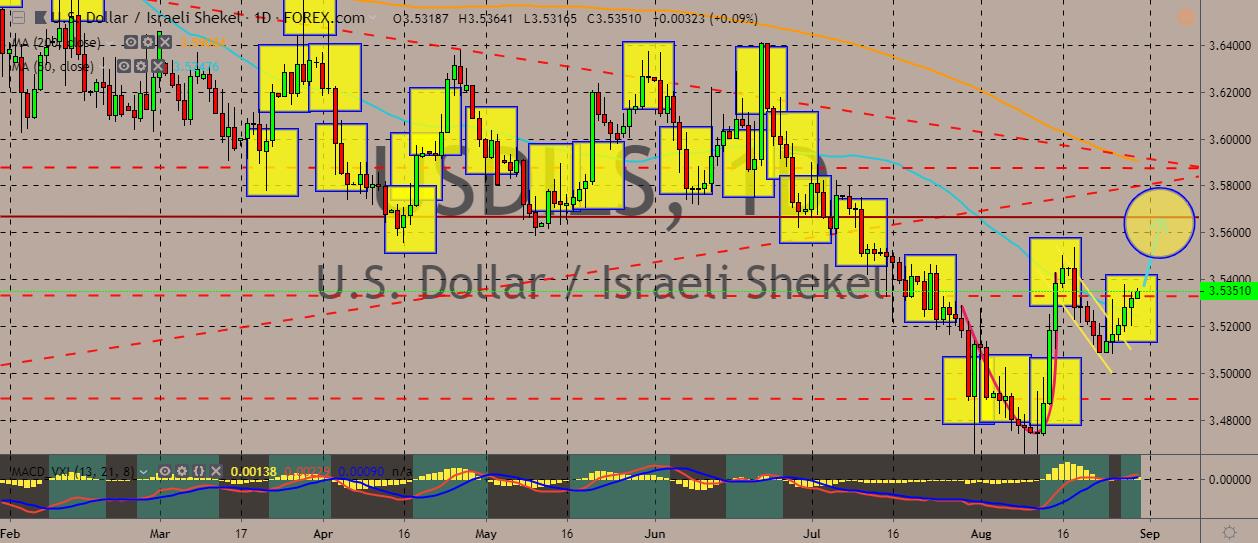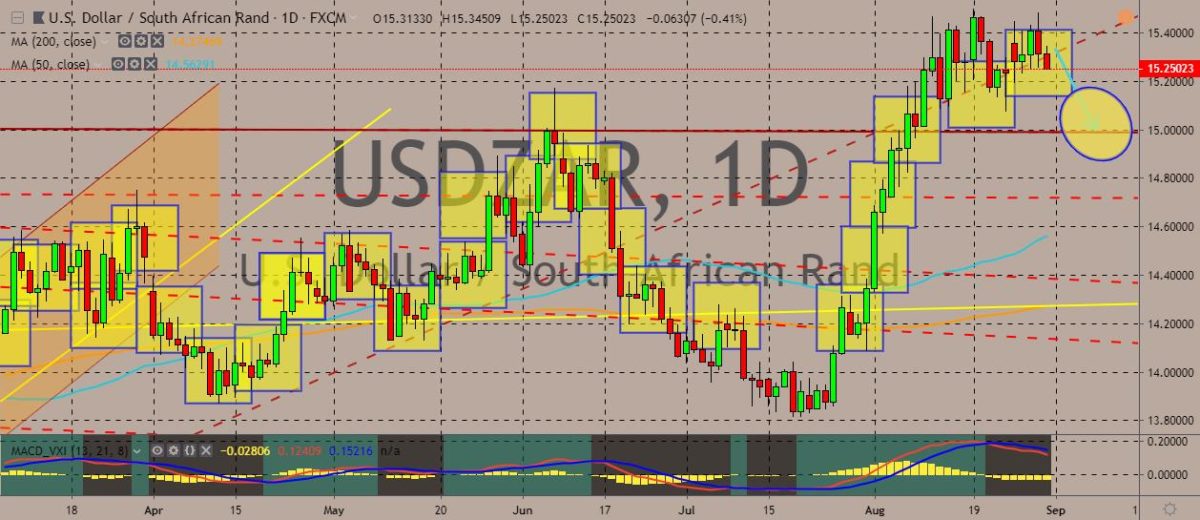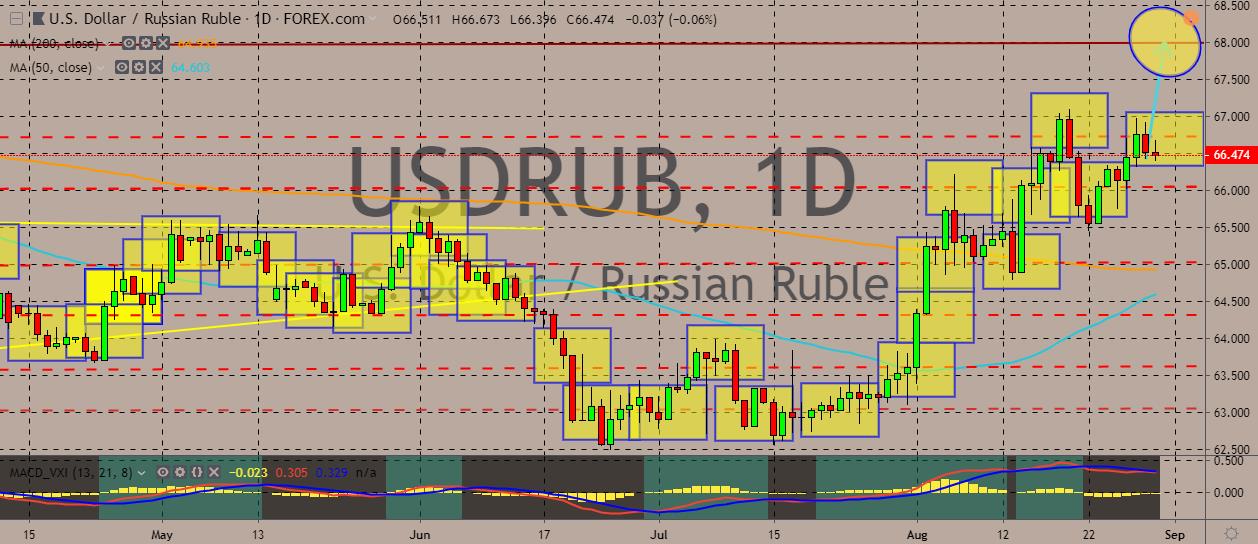Here are the latest market charts and analysis for today. Check them out and know what’s happening in the market today.
USDPLN
The pair is trading up in the charts, with the moving averages 50-day and 200-day continuing the golden cross bullishness. The pair has also traded back up in the trading channel after slumping to months low. Over in Poland, the prime minister just announced that the country’s next annual state budget will not run a deficit—the first time for in 30 years. According to Prime Minister Mateusz Morawiecki, the government still needs consultations with worker and employer groups and approval coming from two parliament chambers and president. This comes ahead of the parliamentary elections, which will be held on October 13. The ruling party has the edge, with many expecting it to win a majority, mainly because of the generous subsidies to families with children and to the elderly. Morawiecki promised that such programs will be continued. Some economists, however, have been concerned about the government’s high spending.

USDILS
The pair has recovered from its record lows, and now it is pursing to climb back to its previous ranges on the daily charts. The US dollar isn’t moving a lot against major peers but retains its strength against other currencies. It is still largely influenced by the ongoing tensions between Beijing and Washington. Gao Feng, who is spokesman for China’s Foreign Ministry, said that the Asian country is willing to talk to the US on trade issues “with calm attitude,” saying that China won’t retaliate against US latest tariff moves for now. In connection to this, the Israel Shekel is pressured by the trade war’s tangent effects. Israel relies heavily on exports and imports, which the trade war basically hits. The country is struggling with a large budget deficit, nearing 4% of gross domestic product. This kind of large deficit would force the next government to slash 20 billion shekels, or $5.7 billion from the 2020 state budget.

USDZAR
The pair has recently recovered from recent lows after the dollar weakened during the past month. Now the pair is following an upward trend line, breaking below it after the South African rand strengthened despite weak economic data. South Africa’s producer price index rose by 4.9% in July on a year-on-year basis. It was much slower than June’s 5.8% rate of growth. This trailed market expectations of 5.4% increase. It was also the slowest inflation rate since February. Meanwhile, the currency is expected to rise even further as the year nears its end with the Federal Reserve largely expected to cut interest rates. The rand also appears to be also affected by the developments—or lack thereof—in the US-China trade negotiations. South Africa has close economic ties with China, giving it a more precarious financial situation. This made the rand suffer noticeably more than other emerging market currencies.

USDRUB
The pair is back up on the charts, with the 50-day moving average threatening to cross the 200-day moving average level, indicating an increasingly bullish sentiment for the dollar against the Russia ruble. Over in Russia, the country’s economy minister has revised a set of key economics forecasts. The minister lowered the country’s economic growth and inflation forecasts for 2020. This revision comes after Russian President Vladimir Putin said that Russia’s economic growth was insufficient. Putin then instructed the head of the central bank and top government officials to find ways to bolster economic growth in real incomes. Roughly two weeks before the bank’s rate-setting meeting, the ministry also revised down its 2019 inflation forecast to 3.8%. The Russian central bank is aiming to keep the inflation rate near its 4% target, with the ministry also setting its expectations for the ruble’s performance against the dollar.










COMMENTS